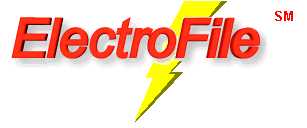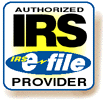Tax Year 2011 brought no "major" tax changes, but many tax changes could significantly impact the preparation of your federal 1040.Take a moment to review these changes prior to your tax appointment to insure we can prepare your return accurately:
First installment of taxes owed on 2010 Roth conversions. Individuals who did a Roth conversion in 2010 and elected to spread the tax payment over 2011 and 2012 will have to pay one-half of the tax owed on their 2011 income tax return. However, if a taxpayer took a distribution in 2011 from their 2010 Roth conversion, they may be required to pay more to cover taxes on the distributed amount. In addition, tax on any additional conversions done in 2011 will have to be included on the 2011 tax return. If you elected to spread the payment or took a distribution in 2011, make sure you bring that documentation with you so we can discuss options and calculations.
Changes for investors in reporting basis. If you’re an investor, the IRS will receive a revised Form 1099-B from your broker that now records the basis of transactions during the year. You should also receive a copy of that form. The IRS will check to see that this information matches the basis reported on your return. Additionally, these transactions will now be reported on the new Form 8949, rather than directly on Schedule D. Be sure you bring all 1099-Bs to our tax appointment.
Carryover basis on inherited assets. If you inherited assets where the estate elected to use the 2010 estate tax repeal option, you will receive a Form 8939 in January or February from the estate executor providing the basis information for those assets. An heir of a 2010 estate using the 2010 estate tax repeal option (and who sold the asset before receiving Form 8939) may be surprised at the amount of capital gain owed on the sale. It can be a complicated calculation, so if you inherited assets and receive Form 8939, bring that with you to our tax appointment.
New requirements for reporting foreign assets. Foreign Account Tax Compliance Act (FATCA) reporting requires foreign assets to be reported if they have a total value of more than $50,000 ($100,000 if married filing jointly). FATCA is broader than what is defined under the Report of Foreign Bank and Financial Accounts, or FBAR. In addition to the prior obligation to report FBAR accounts on Form TDF90-22.1, FATCA must now be reported on a new Form 8938, so if you have a foreign account with balances of $50,000/$100,000, bring that information with you to the tax appointment.
New W-2 reporting of employer-sponsored health care coverage. Although it is only optional for Form W-2s issued in 2012 (becoming mandatory in 2013 under the health care reform legislation), some employees may receive W-2s for 2011 that include a new code (DD) in Box 12 along with the amount for employer-sponsored health care coverage. This provides the IRS with information to determine if the employer and employee have complied with the health insurance mandates of health care reform. However, as those mandates are not yet in effect, this added information on the W-2 does not impact 2011 federal tax return filing requirements.
Employee retention credit. This credit related to 2010 hiring, however, it required retaining the employee for at least 52 weeks to qualify for the credit, thereby moving eligibility for the credit to 2011 tax returns. To qualify for the credit, the employer must have paid wages in the last 26 weeks equal at least to 80 percent of the wages for the first 26 weeks. The credit is claimed on Form 5884-B and is the lesser of $1,000 or 6.2 percent of the retained worker’s wages during the period.
Limited Non-Business Energy Property Credit for 2011. This credit generally equals 10 percent (down from 30 percent the past two years) of what a homeowner spends on eligible energy-saving improvements, up to a maximum tax credit of $500 (down from the $1,500 combined limit that applied for 2009 and 2010). In addition, the energy standards are increased for most property (windows, exterior doors and skylights, for example, must meet Energy Star Program requirements). The cost of certain high-efficiency heating and air conditioning systems, water heaters and stoves that burn biomass all qualify, along with labor costs for installing these items. In addition, the cost of energy-efficient windows and skylights, energy-efficient doors, qualifying insulation and certain roofs also qualify for the credit, though the cost of installing these items do not. Be sure to let us know if you think you may qualify for this credit, and bring receipts with you to our tax appointment.
More Tax Information of Interest . . .
Standard mileage rates up in 2011. The standard mileage rate for business use of a car, van, pick-up or panel truck is 51 cents a mile for miles driven during the first six months of 2011 (January through June) and 55.5 cents a mile for the rest of the year, up from 50 cents for 2010. The rate for the cost of operating a vehicle for medical reasons or as part of a deductible move is 19 cents a mile from January through June and 23.5 cents a mile after that, up from 16.5 cents per mile in 2010. The rate for using a car to provide services to charitable organizations is set by law and remains at 14 cents a mile.
AMT exemption increased. For tax-year 2011, the alternative minimum tax exemption increases to the following levels:
$74,450 for a married couple filing a joint return and qualifying widows and
widowers, up from $72,450 in 2010.
$37,225 for a married person filing
separately, up from $36,225.
$48,450 for singles and heads of household, up
from $47,450.
Health insurance deduction for self-employed people. In 2011, eligible self-employed individuals and S corporation shareholders can use the self-employed health insurance deduction to reduce their income tax liability. Premiums paid for health insurance covering the taxpayer, spouse and dependents generally qualify for this deduction. In addition, premiums paid to cover an adult child under age 27 at the end of the year, also qualify, even if the child is not the taxpayer’s dependent. However, the deduction from self-employment income for determining self-employment tax, which was available only in tax-year 2010, no longer applies. As before, the insurance plan must be set up under the taxpayer’s business, and the taxpayer cannot be eligible to participate in an employer-sponsored health plan.
Change for HSAs and MSAs . Starting in 2011, the additional tax on distributions from a health savings account (HSA), not used for qualified medical expenses, increases from 10 percent to 20 percent. Similarly, the additional tax on distributions from an Archer medical savings account (MSA), not used for qualified medical expenses, rises from 15 percent to 20 percent.
I hope you find this helpful, and as always, we look forward to seeing you on as we continue to help you manage these complex and growing tax issues.
Sincerely,
ElectroFile Income Tax Service




